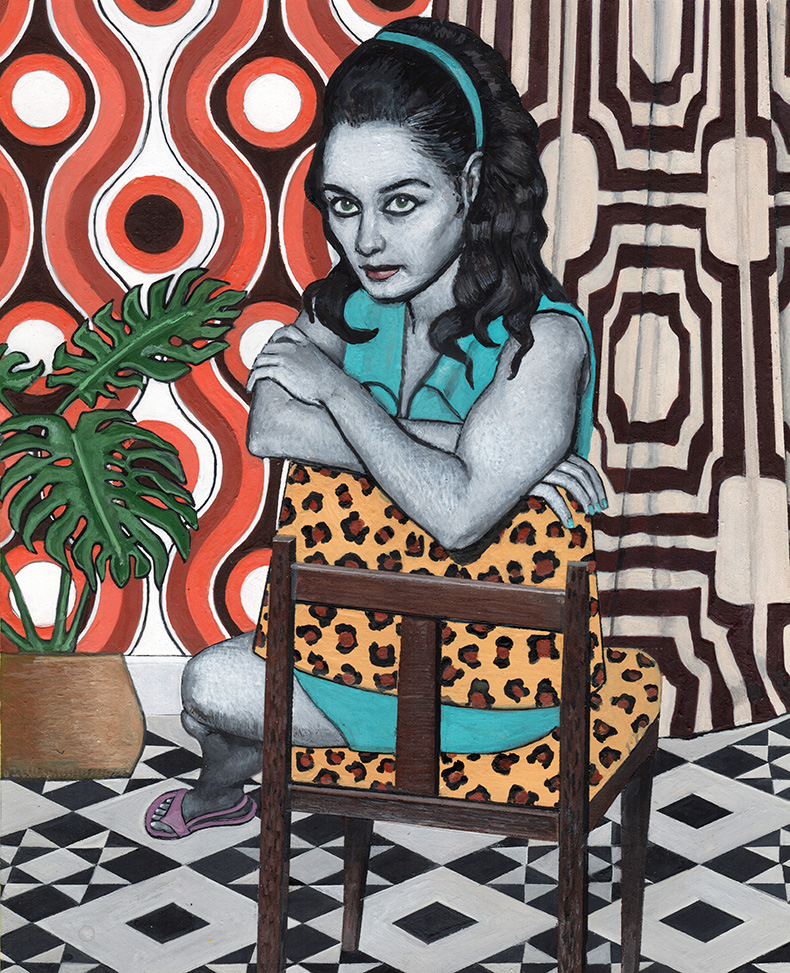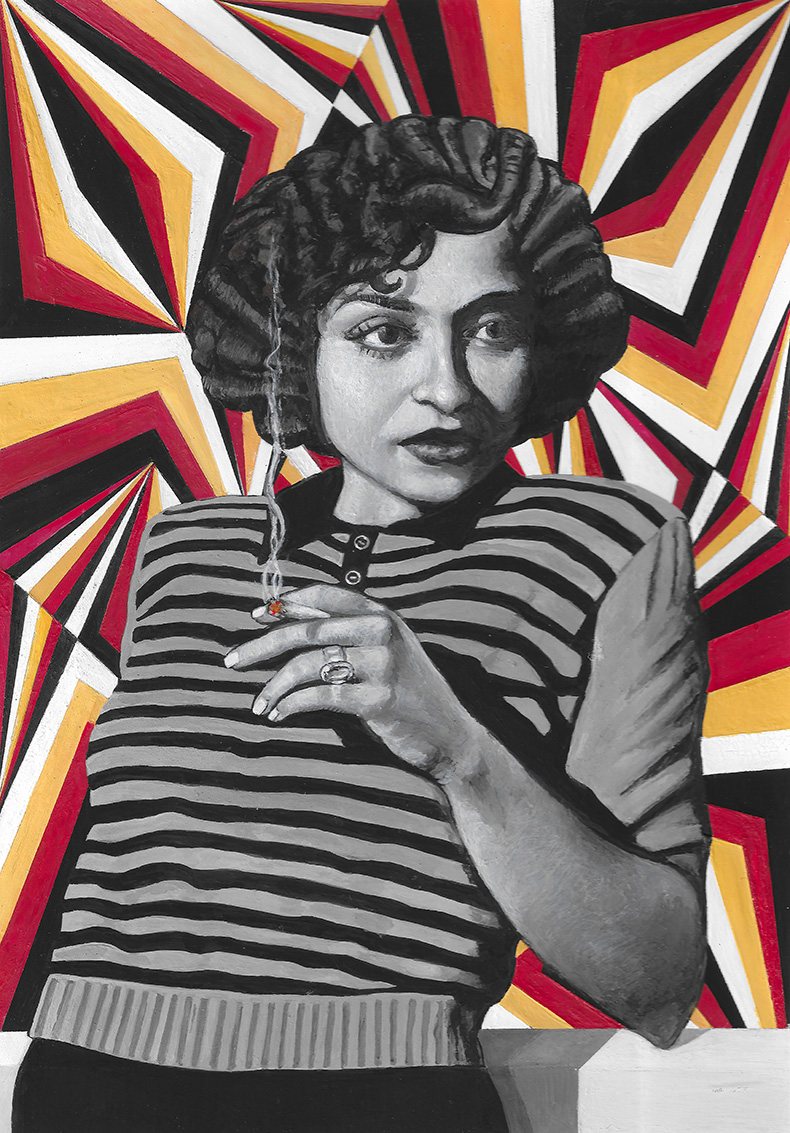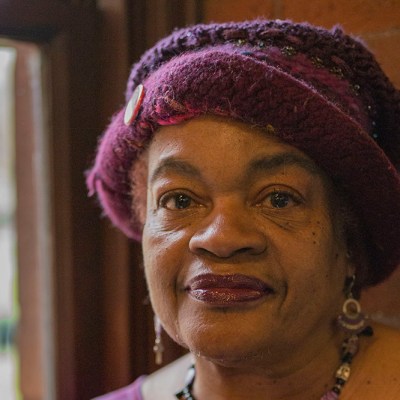Through her multimedia practice, the Iranian artist Soheila Sokhanvari weaves together political and cultural histories with elements of magical realism and references to art history. From found objects and taxidermy to crude oil and egg tempera on calf vellum, the materials that she uses play an integral part in the stories that she is telling while the patterns and colours evoke specific emotional atmospheres. ‘For me, pattern is how we subconsciously judge each other and locate time, but there’s also a psychological aspect because patterns give us an emotional attachment to objects,’ she has said. Her first institutional show, ‘Rebel Rebel’, transforms the Barbican Centre’s Curve Gallery into a vivid, immersive space with geometric patterns based on traditional Islamic design hand-painted onto the walls and floor, mirrored star sculptures and a series of miniatures celebrating feminist icons from pre-revolutionary Iran.
Where is your studio?
At the Wysing Arts Centre in Cambridgeshire.
Do you have a specific studio routine?
Sort of… My studio is 7 miles away from where I live so I have to drive. I usually start the day with a cup of tea while I answer my emails, look up things, answer any messages I need to reply to, listen to some music, do a little bit of dancing maybe. Then I will choose the kind of painting I want to work on that day; I select the colours I’m going to use and make the egg tempera paint by mixing the pigments with egg yolk, water and vinegar droplets.
Essentially, it’s about settling into my space, answering the things I need to answer and then cracking on with work. I will then work very continuously; I will often miss lunch because I’m not really aware of the time. At the end of the day, I get back in my car, I pick up my husband from the station and go home. It’s a very monk-like existence.
Eve (Portrait of Katayoun (Amir Ebrahimi)) (2021), Soheila Sokhanvari. Courtesy the artist and Kristin Hjellegjerde gallery; © Soheila Sokhanvari

What kind of music are you listening to in the mornings?
I have an eclectic taste in music. Lately, I have been listening to Carmel – they are a British-French jazz and blues band from the 1980s. But I listen to anything from Japanese classical music to the sound of rain to Indian music. I think I am very easily affected by music. If I am listening to happy music then I tend to choose very vibrant colours but if I am listening to more sombre music my colours tone down a bit. Sometimes I change my mind the next day and the colours will change again.
How would you describe the atmosphere of your studio?
My space is somewhere between complete organisation and chaos. On the right hand side as you enter the space, there is a shelf, with different kinds of pigments lined up in a row according to colour classifications. Underneath that is my desk, where I do my painting facing the window which looks on to the countryside. That part of the studio is very tidy and has to be very dust-free because egg tempera doesn’t like dust. If you have dust in the paint it will never get out.
At the other end of the studio there is a crude oil table – that area is a little bit messy, it’s where I mix crude oil with various dilutions for my drawings. I also have my kettle, my tea making things, my printer and scanner.
Do you work alone?
Absolutely. I’ve never had an assistant. I think if I had an assistant, they would get very bored by my processes. It’s very much a labour love – it takes a whole day to create even a tiny space.
Is there anything that frustrates you about your studio?
Yes. It doesn’t have double doors, so I can’t make any sculptures. I have a single door that opens on to a corridor but I would never manage to get a sculpture out. It also doesn’t have a sink so I don’t have access to water unless I go to the kitchen.
It looks like an office that has been converted into a studio space. I think the space was actually designed by the conceptual artist who was in the space before I moved in. When I asked him what he needed, he just said a room. So, he didn’t think about how future people might want to use the space. When someone designs a studio and doesn’t ask for feedback, it’s very annoying.
Rebel (Portrait of Zinat Moadab) (2021), Soheila Sokhanvari. Courtesy the artist and Kristin Hjellegjerde gallery; © Soheila Sokhanvari.

What’s the most well-thumbed book in your studio?
I love animations and I have a book of animations from the medieval era. I like to make references to the colour combinations that they use. I tend to base my paintings on the colour combinations that I’ve been inspired by from Old Masters paintings. As a student, I made a series of abstract paintings which were inspired by Piero della Francesca’s paintings. I took samples from his colours and put them next to each other like colour blocks to create an abstract scene.
Who is the most interesting visitor you’ve had to your studio?
Eleanor Nairne, who is a curator at the Barbican. She is a fantastic champion of women artists, a complete badass and a very powerful woman – I love her very much. I am true lover of any person with a vision and the heart to complete it, with 100 percent commitment.
Is anything or anyone banned from your studio?
Anyone who is a fascist and anyone who is not a feminist. As the artist Sarah Maple says, ‘The opposite to a feminist is an arsehole.’
‘Sohelia Sokhanvari: Rebel Rebel’ is at the Curve Gallery, the Barbican Centre until 26 February 2023.



